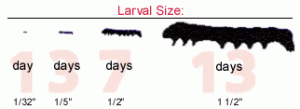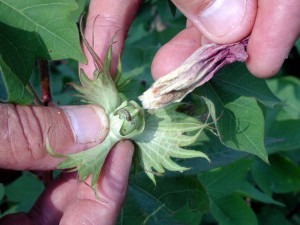Bollworms in Bt Cotton
go.ncsu.edu/readext?313486
en Español / em Português
El inglés es el idioma de control de esta página. En la medida en que haya algún conflicto entre la traducción al inglés y la traducción, el inglés prevalece.
Al hacer clic en el enlace de traducción se activa un servicio de traducción gratuito para convertir la página al español. Al igual que con cualquier traducción por Internet, la conversión no es sensible al contexto y puede que no traduzca el texto en su significado original. NC State Extension no garantiza la exactitud del texto traducido. Por favor, tenga en cuenta que algunas aplicaciones y/o servicios pueden no funcionar como se espera cuando se traducen.
Português
Inglês é o idioma de controle desta página. Na medida que haja algum conflito entre o texto original em Inglês e a tradução, o Inglês prevalece.
Ao clicar no link de tradução, um serviço gratuito de tradução será ativado para converter a página para o Português. Como em qualquer tradução pela internet, a conversão não é sensivel ao contexto e pode não ocorrer a tradução para o significado orginal. O serviço de Extensão da Carolina do Norte (NC State Extension) não garante a exatidão do texto traduzido. Por favor, observe que algumas funções ou serviços podem não funcionar como esperado após a tradução.
English
English is the controlling language of this page. To the extent there is any conflict between the English text and the translation, English controls.
Clicking on the translation link activates a free translation service to convert the page to Spanish. As with any Internet translation, the conversion is not context-sensitive and may not translate the text to its original meaning. NC State Extension does not guarantee the accuracy of the translated text. Please note that some applications and/or services may not function as expected when translated.
Collapse ▲We are between flights right now (access the trap data and select “corn earworm” on the right), having experienced our major bollworm (aka corn earworm) flight during the first week of August. Most of the bollworms that we are finding in cotton and soybeans resulted from this flight. We can expect another flight within a few weeks. The general trend for this generation of earworms is that they show up and lay some eggs, but really never amount into much of anything. It would still be a good idea to scout any late-planted soybeans. Moths preferentially lay in tender beans, especially those that are flowering.
Most of our cotton in the state is WideStrike or Bollgard II, which produce two proteins that eliminate budworm and are very effective on bollworm. However, sometimes bollworm can develop on Bt cotton. Furthermore, sometimes actions taken earlier in the season (such as pyrethroid, Bidrin or Orthene sprays) knock out natural enemies and can flare worm populations. Bt protein expression varies with environmental conditions, variety, parts of the plant, and time. In general, the least Bt is expressed in squares and flowers. Sometimes bollworms can develop on these plant parts and infest bolls. This is why we have a threshold for bollworms in post-bloom Bt cotton, which is three live larvae per 100 terminals, squares, blooms or bolls. We also recommend scouting for larvae underneath bloom tags, where they have developed on squares and blooms and can move into bolls.
 If you’re scouting cotton, you should focus on the size of the larvae, note where they are located, and take into account the growth of the cotton. Our last effective bloom date for cotton is August 15, so don’t count on any more squares or blooms making it into harvestable bolls. However, recognize that larvae could develop on squares and blooms and move into larger bolls. At a certain point, bolls become too large for larvae to penetrate. If you have large-sized larvae (7+ days) either in bolls or present, your best time for control would have been when they were small (3-7 days). Your best bet will be to wait for these to cycle out since most the damage is done and you won’t kill larvae inside bolls.
If you’re scouting cotton, you should focus on the size of the larvae, note where they are located, and take into account the growth of the cotton. Our last effective bloom date for cotton is August 15, so don’t count on any more squares or blooms making it into harvestable bolls. However, recognize that larvae could develop on squares and blooms and move into larger bolls. At a certain point, bolls become too large for larvae to penetrate. If you have large-sized larvae (7+ days) either in bolls or present, your best time for control would have been when they were small (3-7 days). Your best bet will be to wait for these to cycle out since most the damage is done and you won’t kill larvae inside bolls.



